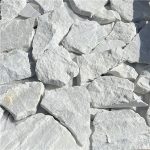The Beauty and Benefits of Stone Veneer Houses
Introduction
Stone veneer houses have gained popularity in recent years due to their timeless beauty, durability, and versatility. This building material offers a stunning alternative to traditional masonry, providing homeowners with the look of natural stone at a fraction of the cost. In this article, we will explore the various aspects of stone veneer houses, including their history, benefits, installation process, maintenance, and design options.
History of Stone Veneer
The use of stone veneer dates back to ancient times when early civilizations used natural stone to clad their structures. The Greeks and Romans were known for their intricate stone masonry, which showcased their craftsmanship and architectural prowess. Over the centuries, the art of stone masonry evolved, leading to the development of stone veneer as a more cost-effective and lightweight alternative to solid stone construction.
Benefits of Stone Veneer Houses
1. Aesthetics: One of the primary reasons homeowners choose stone veneer for their houses is its aesthetic appeal. Stone veneer adds a sense of elegance and sophistication to any home, creating a timeless look that blends seamlessly with various architectural styles.
2. Durability: Stone veneer is highly durable and resistant to the elements, making it an excellent choice for exterior cladding. It can withstand harsh weather conditions, including rain, snow, and extreme temperatures, without deteriorating or fading over time.
3. Versatility: Stone veneer comes in a wide range of colors, shapes, and textures, allowing homeowners to customize their home's appearance to suit their personal style. Whether you prefer a rustic, traditional, or modern look, there is a stone veneer option to match your design preferences.
4. Cost-Effectiveness: Compared to natural stone, stone veneer is more affordable and easier to install, making it a cost-effective choice for homeowners looking to enhance their home's curb appeal without breaking the bank.
Installation Process
The installation of stone veneer involves several steps to ensure a seamless and durable finish. Here is an overview of the typical installation process:
1. Surface Preparation: The existing surface must be cleaned and prepared to ensure proper adhesion of the stone veneer. This may involve removing old siding, repairing any damaged areas, and applying a weather-resistant barrier.
2. Setting the Stones: The stone veneer pieces are carefully arranged and adhered to the surface using mortar or a specialized adhesive. It is essential to follow the manufacturer's instructions for proper installation techniques.
3. Grouting: Once the stones are in place, grout is applied to fill in the gaps between the stones and create a cohesive look. Grout color can be chosen to complement or contrast with the stone veneer for added visual impact.
4. Sealing: To protect the stone veneer and enhance its longevity, a sealant is applied to prevent water penetration and staining. Regular maintenance, such as cleaning and resealing, is recommended to preserve the appearance of the stone veneer over time.
Maintenance
Stone veneer houses require minimal maintenance to retain their beauty and durability. Here are some tips to keep your stone veneer looking its best:
1. Regular Cleaning: Remove dirt, debris, and organic growth, such as moss or algae, from the surface of the stone veneer using a gentle cleaning solution and a soft brush. Avoid harsh chemicals or abrasive cleaners that can damage the stone veneer.
2. Inspect for Damage: Periodically inspect the stone veneer for any signs of damage, such as cracks, chips, or loose stones. Address any issues promptly to prevent further deterioration and maintain the structural integrity of the cladding.
3. Repairs: If you notice any damage to the stone veneer, such as cracks or chips, contact a professional installer to assess the situation and make necessary repairs. Attempting DIY repairs can result in improper installation and compromise the integrity of the cladding.
Design Options
Stone veneer houses offer endless design possibilities, allowing homeowners to create a unique and personalized look for their home. Some popular design options include:

1. Traditional Elegance: Choose a classic stone veneer in neutral tones, such as beige or gray, to achieve a timeless look that complements traditional architectural styles, such as Colonial or Craftsman.
2. Rustic Charm: Opt for a rugged stone veneer with a rough texture and earthy colors, such as brown or tan, to create a cozy and inviting atmosphere reminiscent of a countryside cottage or cabin.
3. Modern Sophistication: Select a sleek stone veneer in bold colors, such as black or charcoal, to add a touch of contemporary flair to your home's exterior. Pair it with clean lines and minimalist accents for a modern aesthetic.
https://www.fs-slate.com/cultured-stone-the-versatile-choice-for-modern-design/ offer a perfect blend of beauty, durability, and versatility, making them a popular choice among homeowners seeking to enhance their home's curb appeal. Whether you prefer a traditional, rustic, or modern look, there is a stone veneer option to suit your design preferences. With proper installation and maintenance, your stone veneer house will stand the test of time and continue to impress for years to come.